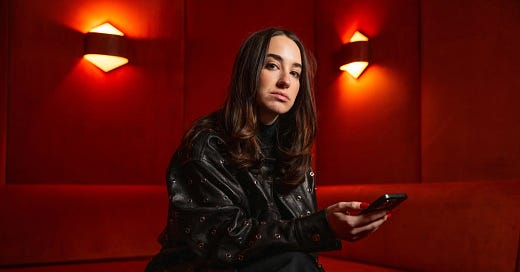How Emily Sundberg Built “Feed Me” Into a Media Brand You Can’t Ignore
A deep dive into the habits, systems, and signals that make her newsletter a masterclass in modern storytelling.
She didn’t build an audience.
She built a media signal.
Her daily newsletter Feed Me isn’t about business, marketing, or personal development.
It’s about restaurants.
Products.
Trips.
Feelings.
But that’s the trap.
If you only look at the topics, you’ll miss the strategy.
What makes Feed Me different?
Emily doesn't just share. She observes.
And then she curates culture in a way that builds trust, taste, and influence.
She’s created a new model for newsletter creators:
One-part journalist
One-part taste-maker
One-part internet anthropologist
1. She Understands How Culture Moves
Most creators talk at culture.
Emily talks about culture.
Big difference.
She pays attention to the little things:
The grocery store items people flex on TikTok
The disappearing trend of lunch breaks
The emotional undertones of travel guides
Then she turns those observations into commentary people didn’t know they needed.
Example:
When everyone was writing about Ozempic and weight loss, Emily zoomed in on what it’s doing to the restaurant industry.
Suddenly, a health trend became a business insight.
And that insight became viral.
2. She Writes How People Think
There’s a cadence to her writing that feels like a conversation inside your head.
No forced transitions.
No bloated intros.
Just a string of thoughts that flow like a text thread between close friends.
Lessons here:
Relatability is more important than perfection
Paragraphs can be one sentence long
You don’t need to sound smart to be smart
Mistake most writers make:
They over-format.
Emily under-formats (on purpose).
It makes her newsletter feel casual. But also, intimate.
Like you’re in on something.
3. She Blends Personal and Practical
There’s always a feeling beneath her facts.
Yes, she links to a new spa brand or a gift guide.
But she also writes about being lonely in New York.
Or burning out on PR launches.
Or remembering her mom’s perfume.
This is what builds long-term readers.
Because you’re not just reading her work, you’re reading her mindset.
What we can learn:
You don’t need to choose between personal and professional
Blend the two with intention
Let people see how you think, not just what you know
4. She Has a POV, Not Just a Topic
Most newsletters are “about marketing” or “about AI.”
Feed Me isn’t “about” anything.
It’s driven by curiosity.
And anchored by one clear lens: Emily’s taste.
And taste is the rarest form of IP.
She’s not trying to be your expert.
She’s trying to be your guide.
A guide to the undercurrents of daily life:
What we’re paying attention to
What we’re ignoring
And what that says about us
This is why Feed Me gets talked about in rooms filled with media execs, brand strategists, and creators.
Because it isn’t just information.
It’s signal.
5. She Plays the Long Game of Influence
You won’t see Emily trying to go viral.
No growth hacks.
No retweet bots.
No over-edited reels.
Instead:
She shows up consistently
She stays rooted in her curiosity
And she earns trust by respecting her readers
Here’s what she’s built because of that:
A paid newsletter with thousands of subscribers
Brand deals from people who already read her work
The respect of top media voices like the team at Dirt, Air Mail, and The Cut
Emily didn’t build her personal brand through attention.
She built it through discernment.
The Playbook We Can Steal
This isn’t about copying Feed Me.
It’s about understanding the principles that make it magnetic.
Here’s what to borrow:
Study the small stuff. Then zoom out.
Write like you’re texting a friend.
Blend emotion with insight.
Let taste guide the curation.
Don’t chase trends; comment on them.
Stay consistent long enough to be known for something.
Emily Sundberg doesn’t just write a newsletter.
She writes what the internet is trying to say.
And when you do that well enough, people stop skimming your name.
They start seeking it.
Thanks for reading!
I write Boulevard of Business every week to dissect the playbooks behind unconventional success stories.
Not the surface-level “growth hacks,” but the deeper systems, beliefs, and behaviors that actually move the needle.
If this issue made you think differently about personal branding, storytelling, or content strategy, that’s the goal.
If it helped you feel one step closer to building something unforgettable, even better.
See you next week!
— Nathan Rech, Boulevard of Business
P.S. If you enjoyed this issue, share it with one person who’d find it valuable. Or post it to LinkedIn and tag me. That’s how this newsletter grows.



